Predicted, anticipated, and finally released. Now we have here these AirPods Max (629 euros on Amazon and on the Apple Store), the “top” headphones that caused a lot of noise at launch due to design, functions, price, a lot of noise. While we are preparing to review them, the latest in a long series of headphones and earphones that we have talked about over the years on Cyberlayman, we have many curiosities to satisfy, question marks that crowded into the mind immediately at their presentation and that immediately became more than they told us the price. Orta, after opening the box, when we started handling this umpteenth Apple accessory designed (mainly) for the Apple ecosystem, they became a tide. We will try to answer to ourselves and, at the same time, to lend a hand to those who are wondering about the advisability of purchase.
- 1 Airpods Max how they are made
- 1.1 Materials and design
- 1.2 The case
- 2 Comfort
- 3 Controls
- 4 How they work
- 4.1 The equalizer that isn’t there
- 4.2 The cable that is not there
- 5 How the Airpods Max sound
- 5.1 The limit of Codecs
- 5.2 Spatial audio
- 6 Anti-noise
- 7 Battery
- 8 Conclusions
- 8.1 Pros
- 8.2 Cons
- 9 Price and availability
Airpods Max how they are made
The AirPods Max shares the name with the most popular earphones of all time but is a different product although not entirely different. If the AirPods are earphones, here we are faced with circumaural headphones born to challenge on the same level and surpass the best anti-noise headphones on the market such as the Sony WH-1000XM4 or the Bose Noise Canceling Headphones 700. However, they are based on the same Bluetooth technology as the AirPods and offer a large number of functions and technologies that can be superimposed on those we have come to know and appreciate precisely in the Airpods and especially in the AirPods Pro.
Materials and design
Apple already produces various ear muffs. We are talking about the Beats Solo Pro (299 euros when not discounted) and above all the excellent Beats Studio 3 (349 euros when not discounted). But the difference between the world of Beats and the rest of the world of headphones is evident as soon as you take them out of the box. The AirPods Max materialize in your hands as something absolutely unique. If the Beats have their own recognizable style but in the end, they are “only” headphones that can be compared with other competitors, there is nothing with a design and a structure that can be compared to those of the Airpods Max.
The headband consists of two steel rods covered with opaque plastic and connected together by a mesh; the pavilions are made of aluminum in various colors and have pads covered with a loose weave fabric. The stylistic choices and ultimately the personality of the Airpods Max immediately recall the Apple world and even if there is no logo, it is intuitive to place them among the Apple products.
After a few moments of bewilderment (do we like them or not?) We began to feel an almost magnetic attraction for their style; it is clear that the AirPods Max emanate fascination fueled not only by the feeling that comes from the look but also by the pleasure one feels in handling them. Solidity, attention to detail, choice of materials are something that makes the Airpods Max perceive as something unique and exclusive. It is equally clear that they may not please everyone because they are definitely not, as Americans would say, “your fathers’ headphones”
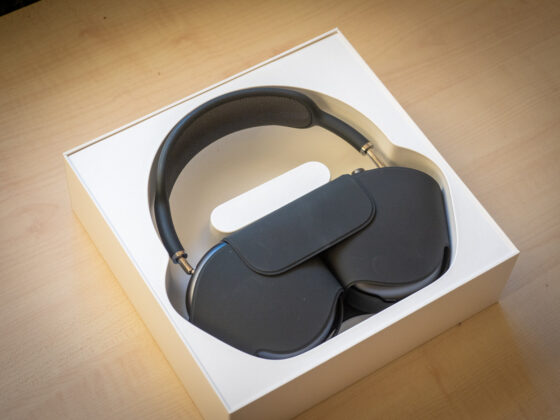
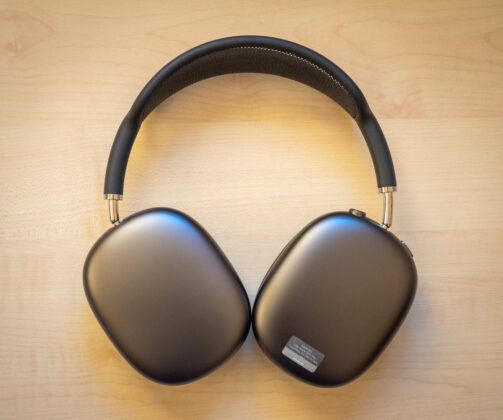
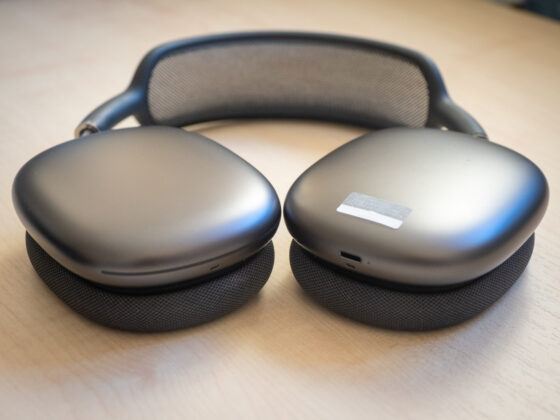
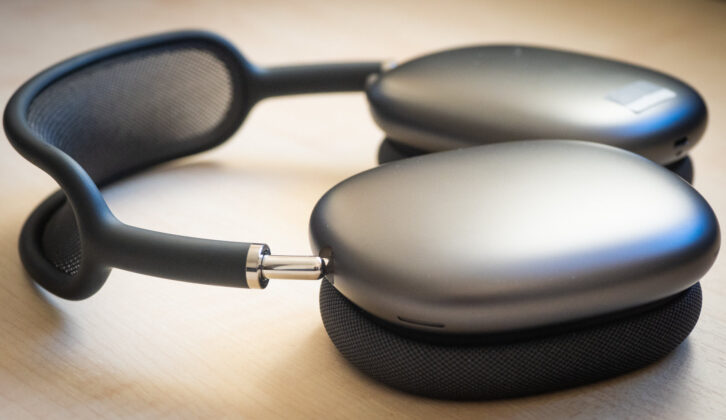
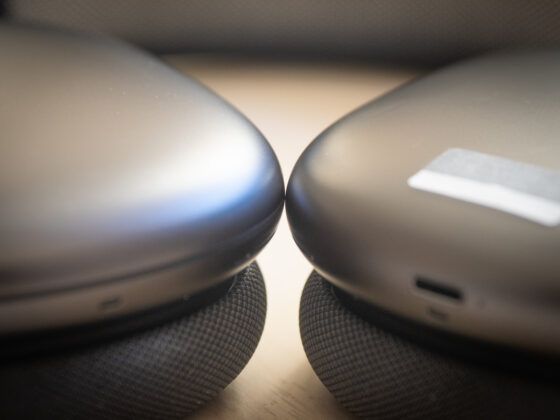
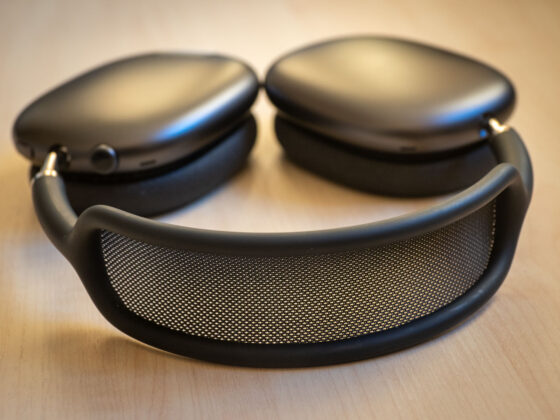
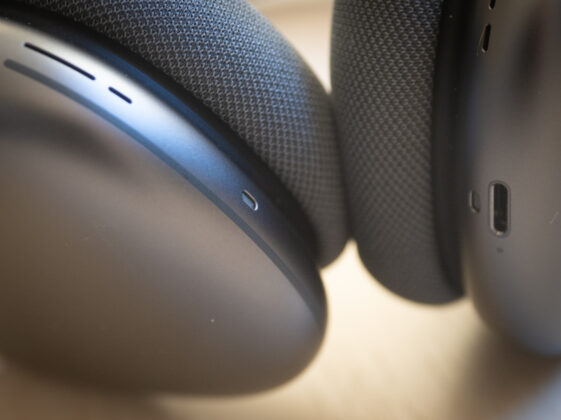
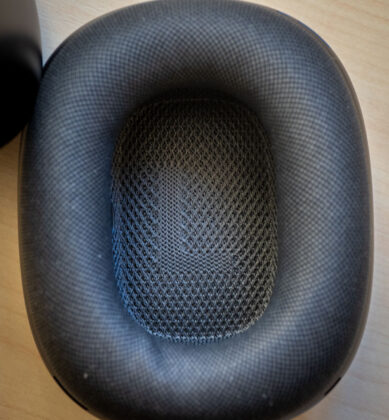
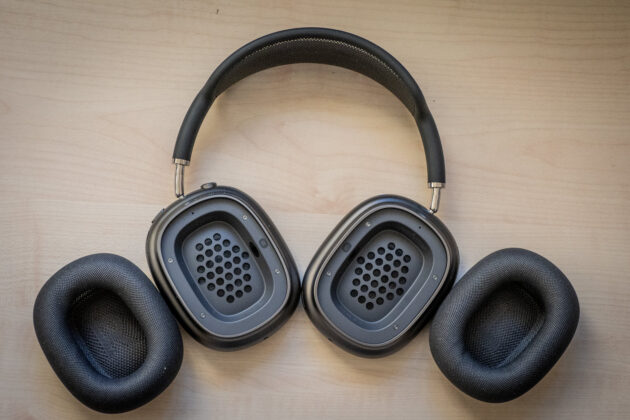
The housing
A completely different and inverse discourse concerns custody. This is certainly the most controversial and contested choice among those made by Apple in the context of the launch of the AirPods Max. It is impossible to add more to what has already been saying negative, critical, and ironic ( there are those who compared it to a handbag and those to a 60s bra) around this sort of bandage in synthetic material that looks so cheap and unkempt. Criticism and ironies aside, it is not clear why obsessive care has been taken in making headphones like the AirPods Max, stylistically and from the point of view of well-kept and functional materials, and then accompany them with an object so sloppy and that, design aside, it is also completely useless; the case is in fact useless for almost nothing since it … holds almost nothing.
First, a large part of the AirPods Max remains uncovered, ready to be scratched and soiled; don’t imagine throwing the headphones into a backpack or bag without other protection.
Secondly, the alleged energy-saving function offered by the enclosure is completely negligible. Apple claims that the Airpods Max once placed in the “handbag” goes into low power mode, but the same mode is triggered automatically after 5 minutes of non-use even without a case. Only after 18 hours do they go into ultra-low consumption mode, but it would be enough to wait another nine hours to have the same mode even without a case. Obviously one would have to wonder how much the battery drops in those nine hours of “low power” instead of “ultra-low”, but we suspect that the difference between putting and not putting the headphones inside the case is irrelevant.
All this should advise Apple to retrace its steps and approach the AirPods Max with an accessory that is acceptable from the point of view of materials and design and that also has some other additional function to be a “meme machine”. For example, it could charge AirPods Max wirelessly or while on the go with a built-in battery. Perhaps it could also be enough that it was a real case, capable of protecting the expense of those who commendably entrusted Apple with 630 euros for a pair of headphones.
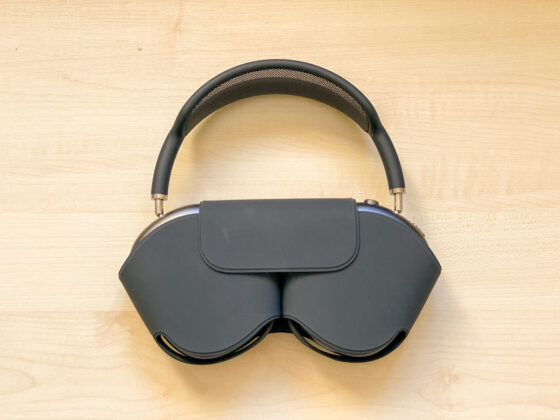
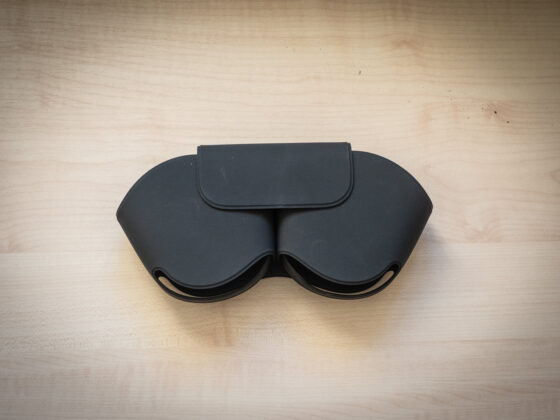
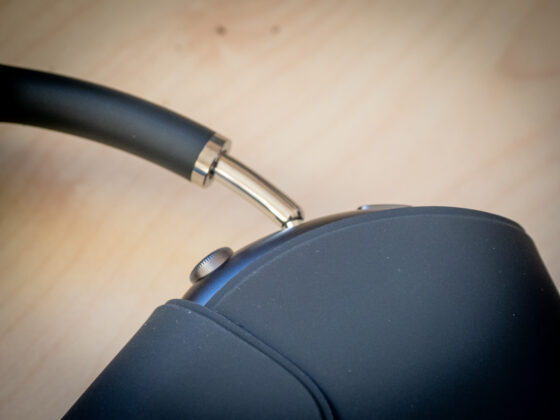
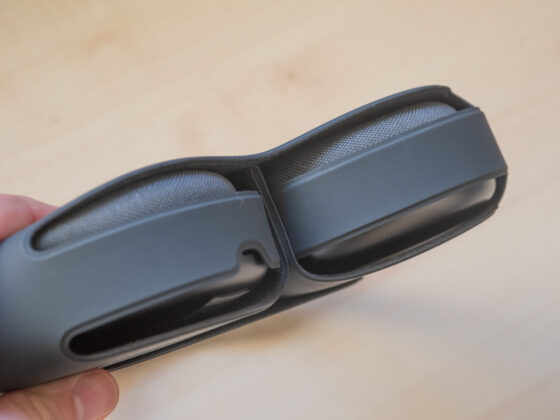
Comfort
The Airpods Max, as mentioned, immediately gives the impression of being very solid but also heavier than other competitors. In fact, due to the materials used (metal versus plastic), they weigh 130 grams more than the aforementioned Sony WH-1000XM4 or the Bose Noise Canceling Headphones 700. Once worn, however, the weight of the AirPods Max miraculously disappears. Be this for the exceptional balance, the micrometric precision of the adjustment of the telescopic rods, the comfort of the headband, the memory foam pads, or, more likely, for all this together, the Apple headphones you can wear for hours without fatigue or problems.
Pressure around the head and ear sealing is perfect and the ingenious knit of the headband makes it comfortable to adhere the headband to the top of the head. Moving or moving, the weight of the Airpods Max is partly discharged on the earpads and partly on the headband which acts as a kind of shock absorber. Even after hours, we didn’t have any problems with the temples of the glasses or the heating effect of the ears thanks to the special large mesh fabric of the pavilions.
Just a pity that when you temporarily take off the headphones to put them around your neck the earpads tighten a little too much and rotate upwards in an unusual position.
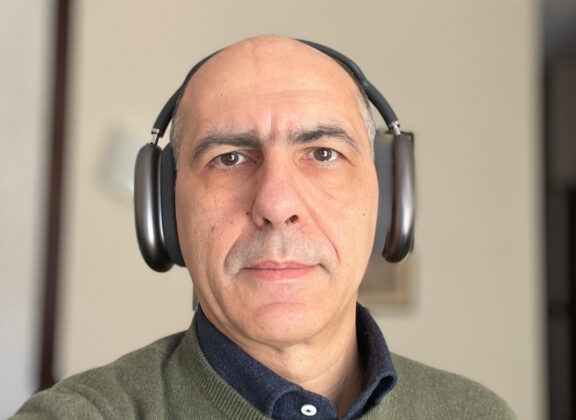
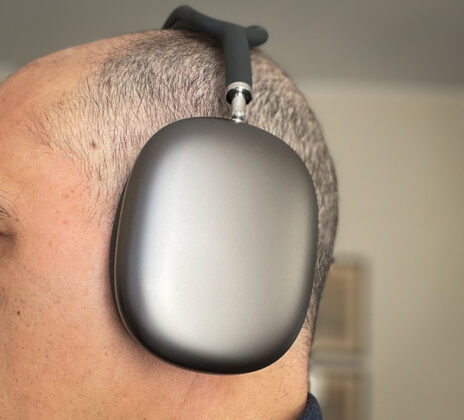
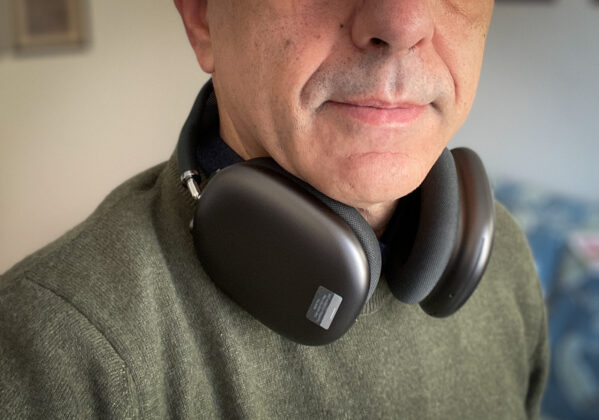
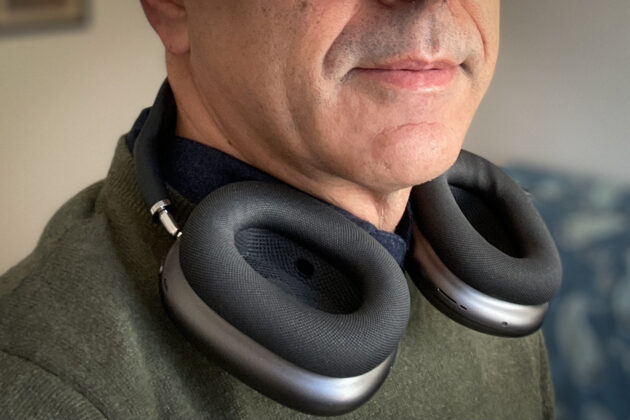
Controls
Apple from the very beginning to the launch of the Airpods was decidedly minimalist in controls.
In the Airpods and AirPods Pro, everything happens through touches that even after years of use we believe are neither comfortable nor intuitive. As if that were not enough in the Airpods, a key (or a gesture) for the volume is missing; this forces you to take your iPhone out of your pocket or to invoke Siri, which in public, despite what Apple wants to convince us of, remains socially unacceptable.
The AirPods Max, on the other hand, abandons any touch control and focuses on physical control using two buttons located on the right ear cup. The functions are essentially entrusted to the digital crown, a knob stylistically identical to the crown of the Apple Watch. This multifunction key allows you to raise and lower the volume (the direction of rotation is decided by iOS), to go back and forth in the music, turn off and activate playback, answer calls and recall Siri. Rotating it, for what it counts, is delightful; offers feedback with a simulated mechanical click and a sound that signals the virtual limit stop, the point where the volume is at its minimum.
In addition to the digital crown, there is also only one other button, the one for the transparency mode (which we will talk about later); a status LED and a port with a Lighting connector complete the whole.
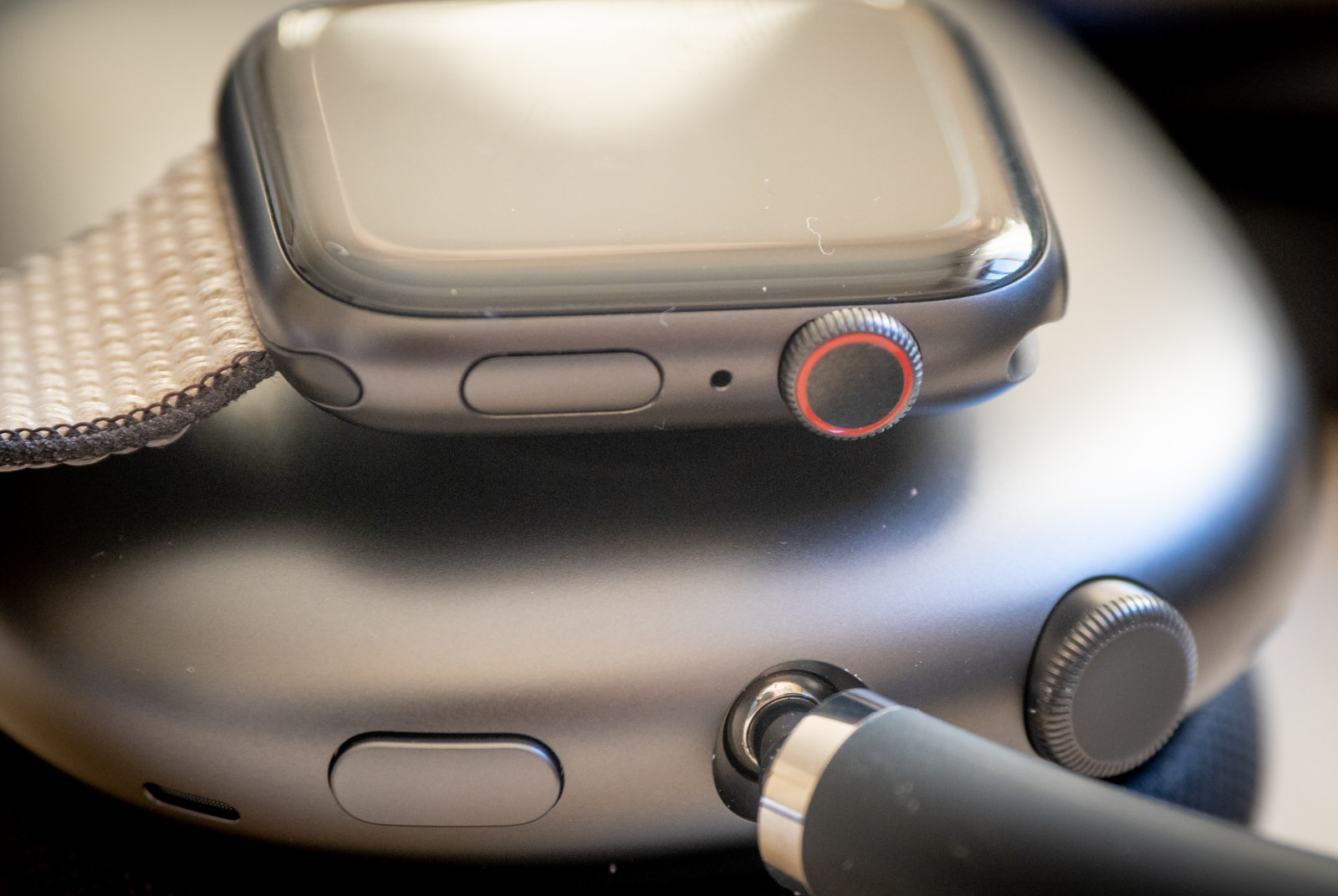 The controls of the AirPods Max are very reminiscent of those of the Apple Watch
The controls of the AirPods Max are very reminiscent of those of the Apple Watch
How do they work
The Airpods Max from the point of view of the software (or firmware) is very similar to the Airpods. If we want to combine them with an iPhone or iPad, just bring them close to the device. At that point, the headphones are recognized by all devices registered in iCloud. If we want to pair them with a Mac or another device, put the headphones in search mode by holding down the transparency key.
They activate and deactivate automatically when you wear them and go into power-saving mode always by themselves (there is no button to turn them off) after a certain period, as we will explain below.
We have read criticisms of the lack of an application. In reality, this is a problem, but it is only for the Android world; with an iPhone and, partially, also with a Mac it is possible to adjust all the functions of the keys and manage relevant options such as the direction of rotation of the digital crown and the automatic detection of the head from the operating system.
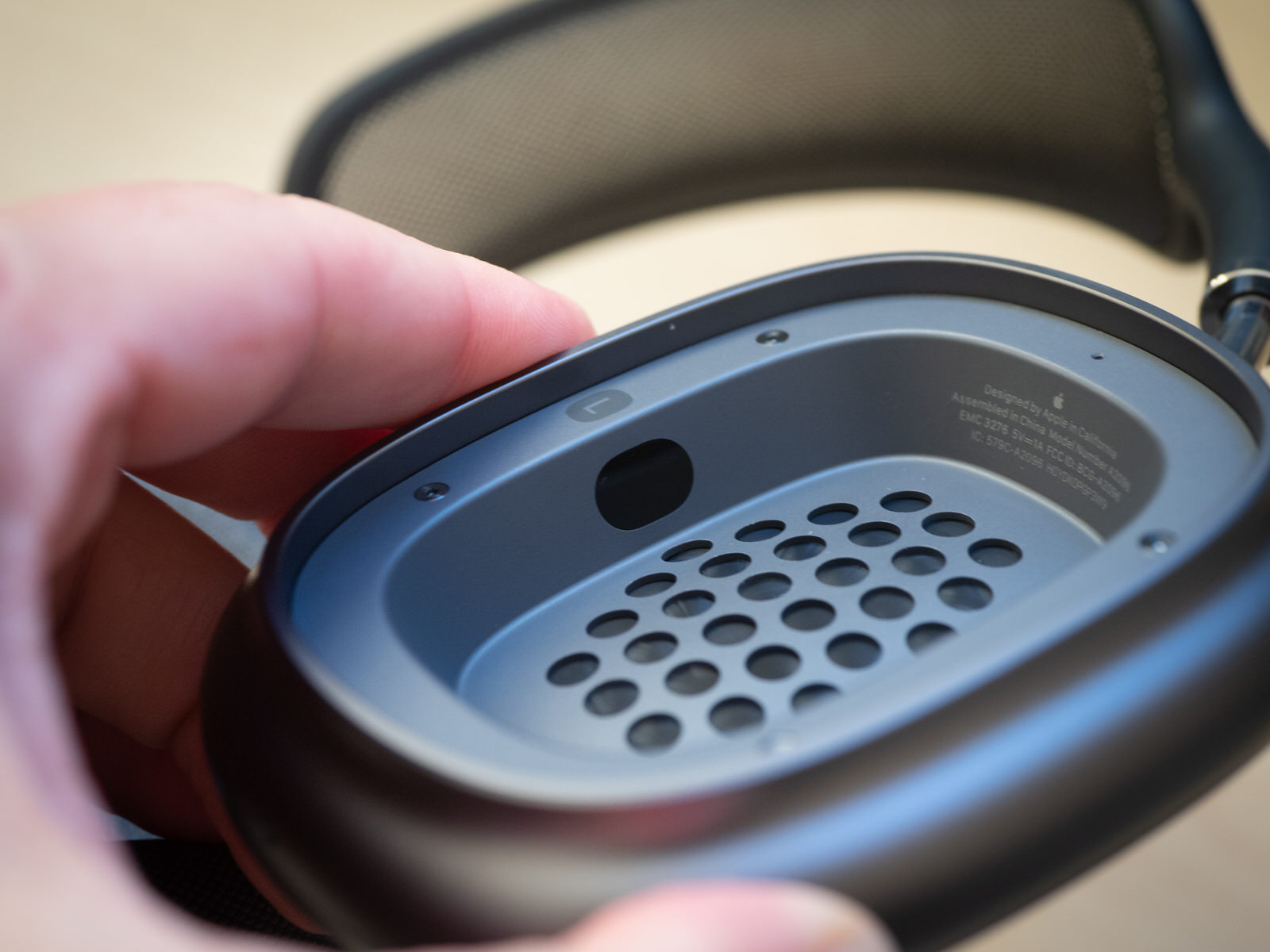 The infrared sensor that detects when the headphones are worn
The infrared sensor that detects when the headphones are worn
The equalizer that is not there
Rather what you should miss is a software equalizer. We understand that, as Apple explains to us, the two H1 chips are responsible for improving the sound performance by evaluating and “adjusting the sound to the size of the ears, based on the exact position of the pads on the head and the level of isolation they are capable of. create ”but headphones of this level should also allow a more precise equalization and personalization of the sound according to the taste of the listener. It’s about a choice that derives from the omnipresent belief on the part of Apple to know “what is good for us”. It happens, for example, in the photographic apparatus of the iPhone where the processor tries to read our minds trying to reproduce what, according to him, we have seen in a landscape or a scene captured with a photoshoot. Apple has been frequently criticized for this and now offers a format, Apple ProRAW, which allows you to manipulate images. It would be too much to wish there is an Apple ProRAW of sound with the possibility of letting the listener decide the color and tonality of the music?
The cable that isn’t there
We said that in the right pavilion there is the Lightning port which has a double function: recharge the headphones through the USB-C cable on Lightning, included in the package and allow the physical connection of the headphones by excluding Bluetooth using a Lightning cable on 3.5mm jack which is not included in the package. In practice, if you want to use the headphones in “wired” mode, perhaps to connect to the on-board entertainment system of an airplane (certainly not a remote hypothesis since we are talking about anti-noise headphones) or connect the AirPods Max to an amplifier or a DAC, essential operations for sound purists, you have to pay another 35 euros.
Here too, as for the equalizer issue, Apple’s choice is not new but substantially in line with many others that we have seen them make in terms of accessories, but this will not help dispel the accusations of stinginess. A cable that costs a few tens of euro cents in materials would not have ruined the turnover of Cupertino and would have been an act of courtesy and gratitude to those who spent 630 for a pair of headphones.
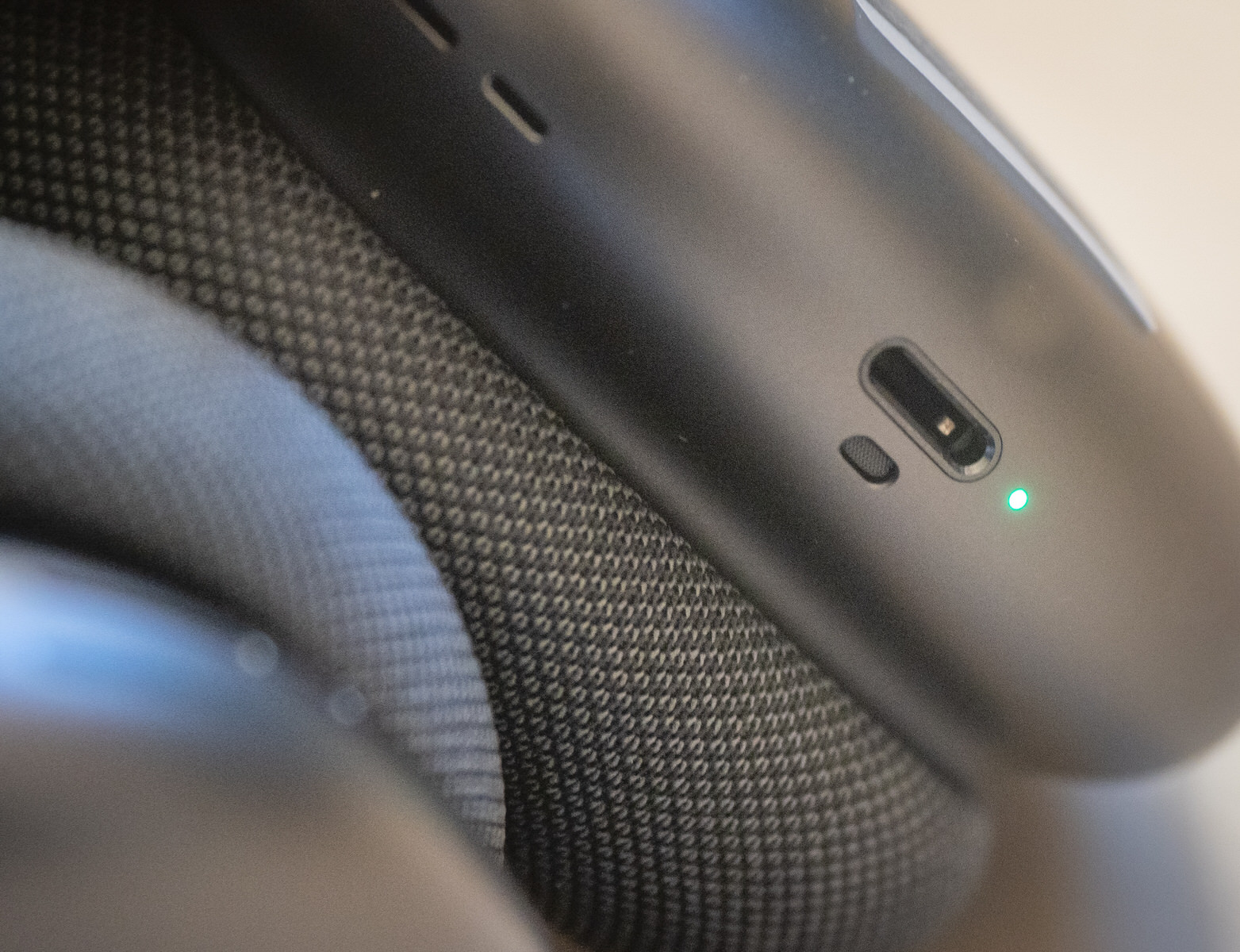 The Lightning connector
The Lightning connector
How Airpods Max sounds
Let’s get to the point, the fundamental question: how does the AirPods Max sound? The answer is not difficult: they sound very good, obviously much better than the non-flawless Airpods and even better than the non-despicable Airpods Pro. about ten hours, we are ready to say that listening to the music produced by the Airpods Max is at levels of excellence.
The bass, as it is possible to perceive following the common thread of songs like It Ain’t Hard to Tell by Nas, Silent Shout by The Knife, or Metronymic Underground by Stereolab, are both powerful and well-controlled. Raising the volume they sound deep, round but never trespassing into excesses which would make them unnatural or distorted. By reducing the volume, the bass is still very audible without drowning out the higher frequencies.
The balance of the music is commendable. Highs, mediums, and medium-lows travel on a parallel track, treated in the same way; it is clearly perceived when listening to complex songs that require maximum democracy such as Adrian Legg’s Cajun Interlude, Oakhurst’s River and Sticks or Explosion in The Sky’s Wilderness.
The Airpods Max do not even sin by definition; Florence Welch’s voice and breaths in Hunger are absolutely real; the headphones put in front of our eyes the sticks that pass between snare and timpani in taking Five by The Dave Brubeck Quartet and we seem to see the hands plucking the strings of the guitars in Chan Chan by Buena Vista Social Club.
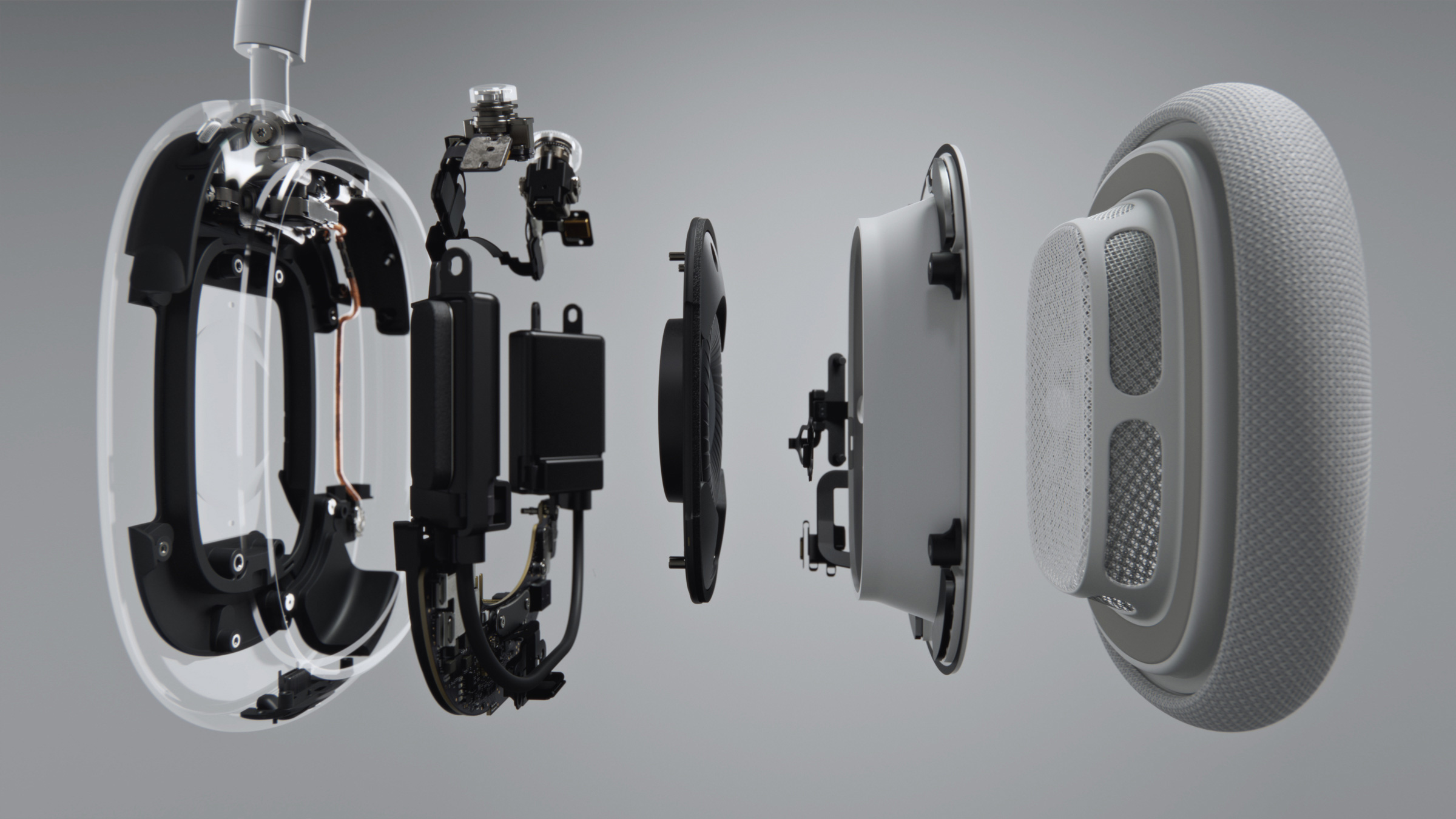
Stage effect and spatiality? Excellent. Just listen to the engaging Now We Are Free from Enya’s Gladiator or Caribbean Blue soundtrack and Bjork’s Hunter Triumph. We listen to a classic piece like Vivaldi’s Summer of the Four Seasons literally positioned in the middle of the orchestra; the AirPods Max sounds great and enveloping in the fourth movement of Beethoven’s 9th Symphony.
We couldn’t find any music that doesn’t sound realistic and natural. But we were personally impressed with the resulting classical, jazz and acoustic tunes, to our ears, almost perfect.
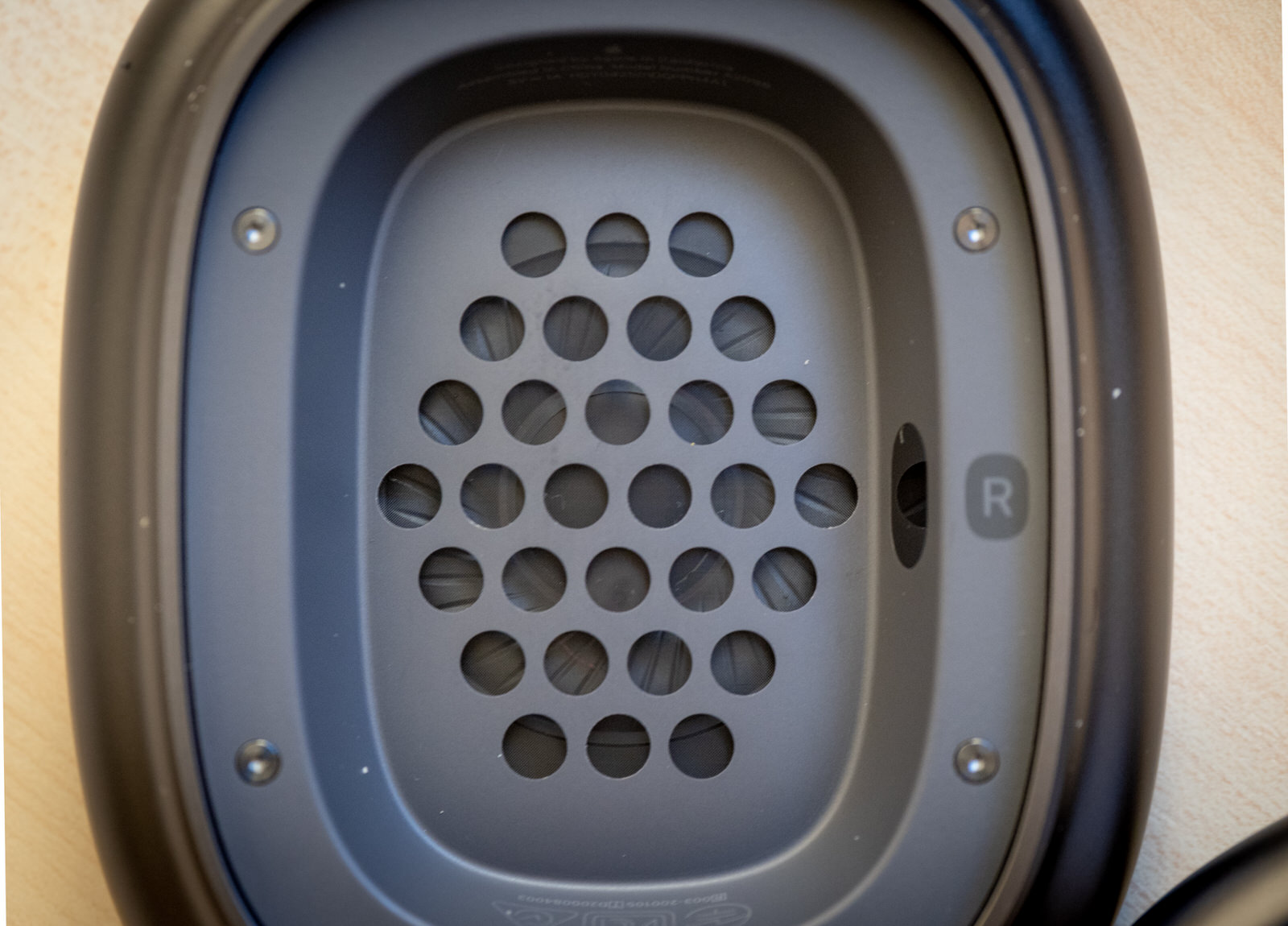 We can see one of the 40mm drivers at the base of the musical quality of the AirPods Max
We can see one of the 40mm drivers at the base of the musical quality of the AirPods Max
The limit of Codecs
If the AirPods Max sounds commendable, this is thanks above all to the hardware: 40mm drivers, two H1 processors that manage the sound, sound-enhancing microphones with active equalization and noise suppression, but for that regarding the software, another fundamental component, there is a gap. Apple headphones only offer support for the AAC codec, a technology that several specialized sites support as well as being efficient only in the Apple world; there is no compatibility with other high-resolution sound codecs such as aptX, aptX HD or LDAC. This is probably not important to the Apple world and the AirPods Max target, but it certainly results in a limitation that other headphones don’t have.
Spatial audio
Another ace up the sleeve of the AirPods Max is in spatial audio, a technology “which – says Apple offers dynamic detection of the position of the head to simulate the surround sound experience”. In fact with a recent device running iOS14 or iPadOS 14 and a supported app (for now Disney Channel and AppleTV + when the audio track is recorded in 5.1, 7.1, and Dolby Atmos) “The sound field remains anchored to the device and the voice remains with the actor or with the action on the screen “.
This system, similar to Dolby Atmos for headphones and the future PS5 3D Audio, puts us at the center of a three-dimensional space very similar to that of the cinema, an open and wide sound that is added to a bass enhancement to simulate the presence of a Subwoofer. The AirPods Max excels over the competition also for this “trick” that relies on the gyroscope of the headphones and on the sensors of the iPhone.
We tried to listen to an episode of Mandalorian and the final battle of Avengers End Game widening our eyes, or rather ears at what was provided to us by Apple headphones. Our iPad turned into our individual cinema screen from which the main soundtrack and speech came, very clear and defined; around us were virtual speakers supported by compelling and engaging bass. Although we are obviously far from the performance of a real home cinema system, it is something impressive and far superior to any “stereo” experience. It would be extraordinary if the same technology, now compatible with all mobile devices launched in 2017, would also work with the Apple TV. Currently, in practice, it is only useful while using headphones while traveling because it seems rather unlikely someone with a TV available to sit in the living room to watch a movie on an iPhone or iPad.
Anti-noise
If the Airpods Pro is at the top in music, the same must be said in noise reduction. The ANC technology implemented by Apple in its headphones offers results superior to those of any other noise-canceling earphones we have tried recently, including the Bose Quiet Earbuds as well as the AirPods Pro and on a par with that of the best in class such as the Bose 700. The merit it is both the noise suppression systems but also the ear cups that make a decisive contribution to passive soundproofing.
Given the period we are living in, we could not test the headphones on an airplane or train whose environments represent a parameter for the effectiveness of noise suppression, but we helped ourselves with digital, the soundbar of our TV and YouTube by reproducing the sound. of the cabin of a Boeing 777, the noise of the engines of an Airbus, the rattle of a train, an environment made very noisy by human voices. When the sound has a low, unambiguous, and constant frequency, it is totally canceled, when it touches multiple frequencies or is acute it is considerably implemented and even a volume is enough medium bass music to make everything around us disappear.
The only limitation of the Airpods Max in terms of ANC technology is in the lack of a noise suppression level adjustment system which instead has, for example, the Bose 700.
Apple headphones, like the Airpods Pro, only have transparency mode. which however is very efficient. As anyone who has already tried this technology in the AirPods Pro knows, it does not consist in deactivating the ANC, it is rather a system that allows us to perceive what is happening around us bypassing the sound around us captured by external microphones. The effect produced is particularly natural and convincing.
Battery
Apple claims that the Airpods Max has a battery life of 20 hours. A milestone that we actually reached and easily surpassed (about 21 hours) using headphones at 50% volume with the noise suppression system activated. Charging is done through the Lighting cable on USB-C which restores the full capacity of the batteries in a couple of hours, but even using another USB-A cable the times should not get too long except for the fact that, like in other headphones and earphones, in the Airpods Max there is a “fast fuel” mode that in five minutes brings the autonomy from zero to 90 minutes. If you want to have this initial idea, it is essential to have a USB-C charger.
In Apple headphones, the on/off button is missing. The AirPods Max in fact, as we have said and as Apple explains, go into low consumption mode by themselves, after a few minutes (or by putting them in the case-handbag); subsequently if the inactivity continues they put into hibernation. This happens after 18 hours in the case (or 27 hours without the case), this mode is more or less equivalent to a real shutdown since Bluetooth is also deactivated. While understanding that eliminating the “on-off” button strengthens the minimalist system of the Airpods Max, has had a way to turn the headphones off and on would have been perhaps more intuitive.
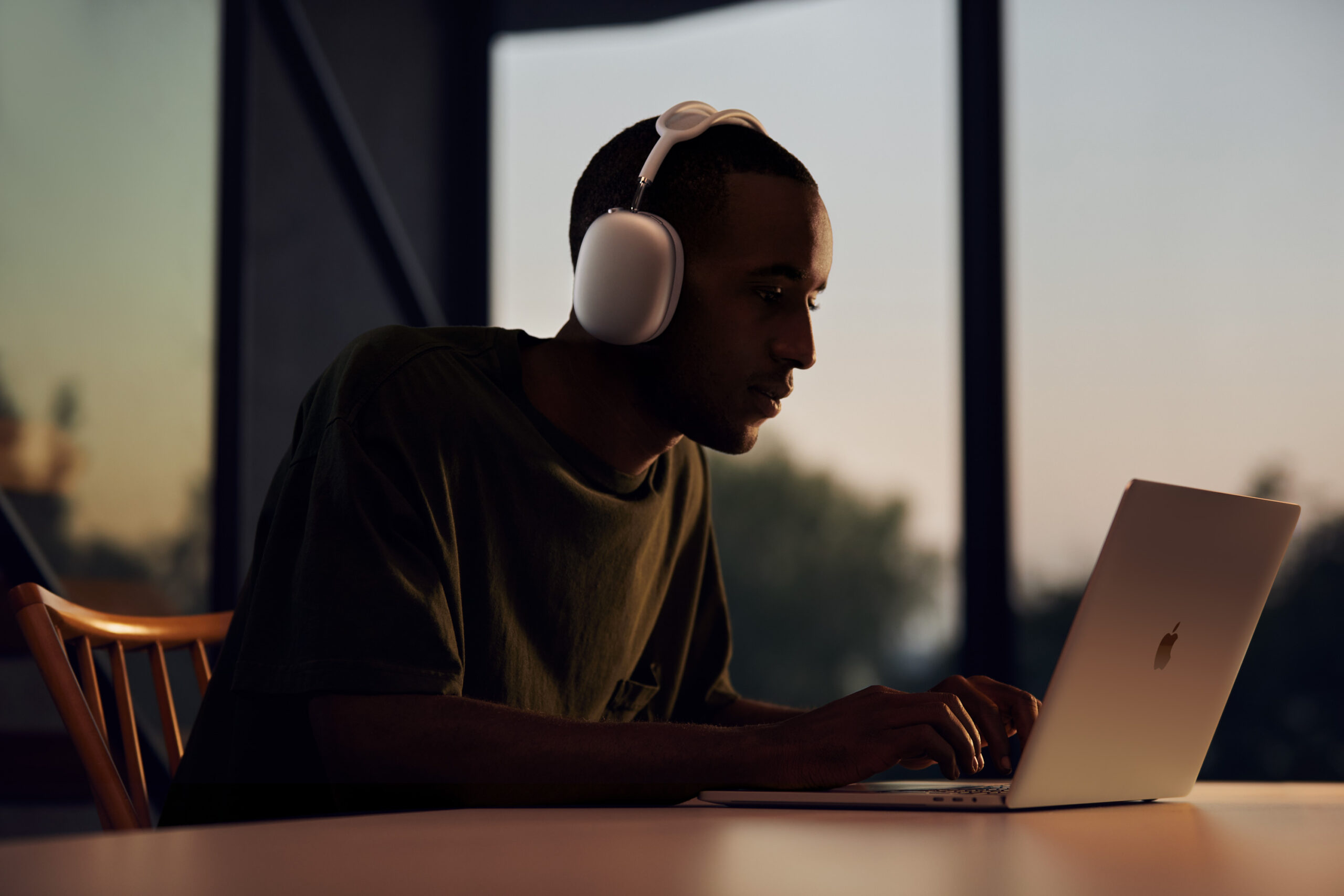
Conclusions
The Airpods Max are headphones of excellence. They are extraordinarily comfortable, built with quality materials, and offer a design that, however subjective, makes them unique and distinctive. The quality of the music they play is at the top of wireless technologies and the sound suppression system rivals that of market champions, Bose and Sony. Finally, they are perfectly integrated with the system of Apple devices and offer the exciting and exclusive Audio Spaziale. We would recommend them without batting an eyelid sure not to disappoint anyone except that we are talking about 630 euro headphones, a price for which should be absolutely perfect from every point of view, which instead is not I’m.
They’re supposed to be audiophile headphones but they’re really just Bluetooth headphones, a technology that true audiophiles appreciate when a bug in their soup; lack support for several high-fidelity audio codecs and software equalization; to be connected with a cable in contexts such as airplane flight, a basic function, they force to spend another 35 euros; they have custody that we don’t know whether to consider more unacceptable or ridiculous; the best and most distinctive technologies only work using an iPhone or iPad. Finally, there are headphones of comparable music quality that cost less than half.
In short: for what they cost they cannot be headphones for those who simply want a good product and for what they offer they are not even for those who want the absolute best in terms of musical quality and not.
Who are the AirPods Max for, then? The answer we gave ourselves is that they are headphones for everyone those, whatever the reason, they think it can and is worth spending 630 euros for a pair of headphones. After all, if there are people who think that it is possible to spend a thousand euros for a pair of excellent Gucci sneakers or 5000 euros for an excellent Chanel bag when there are excellent sneakers for 150 euros or excellent bags from 400 euros, there are certainly also people who think that it is possible to spend 630 euros for a pair of excellent headphones when there are excellent headphones that cost 300 euros.
Pro
- Extraordinarily comfortable
- Quality of materials
- Top-of-the-range sound Bluetooth technology
- Effectiveness of the noise reduction system
- Exciting Space Audio Technology
Cons
- Almost meaningless outside the Apple ecosystem
- Incomprehensible lack of a physical connection cable
- Disconcerting case
- Lack of support of the most popular Codecs
- Price well above that of the market
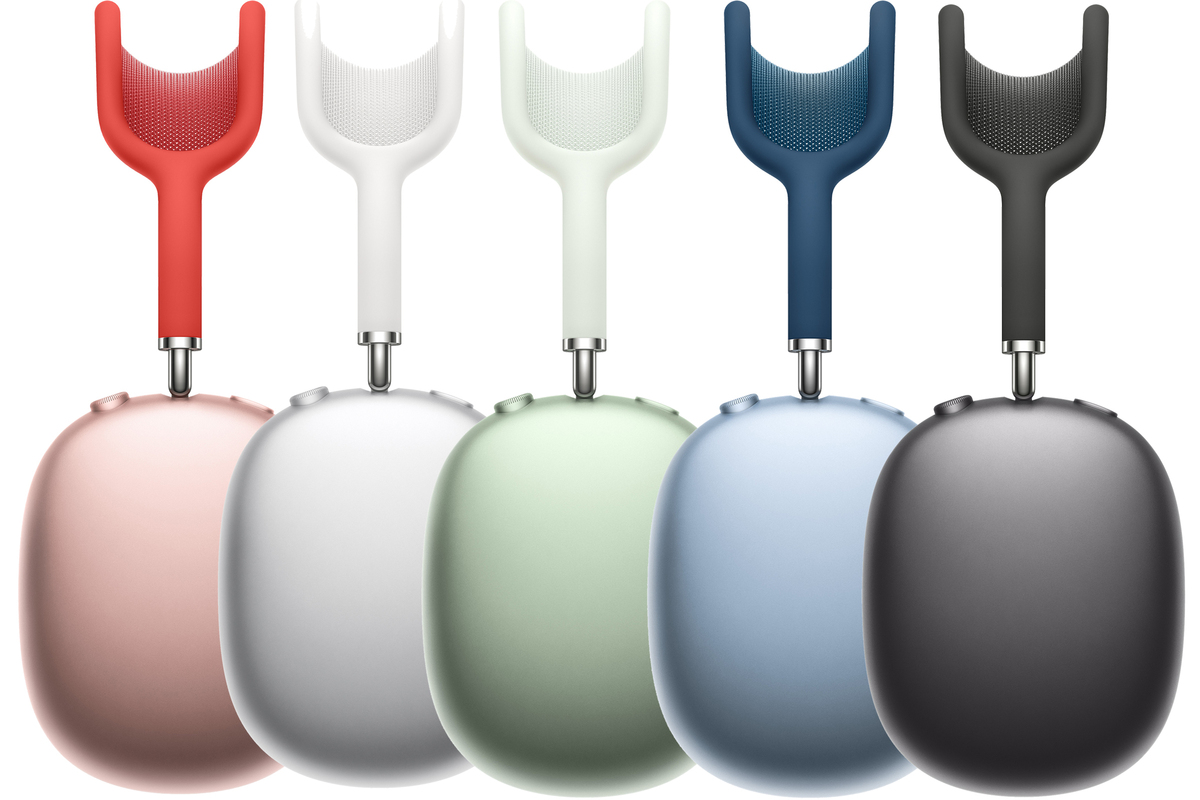
Price and availability
The Airpods Max comes in five colors: silver, space black, red, green, and light blue. They have a price of 629 euros and are available at Apple Stores and Apple resellers. You can buy them online (currently with a long wait for delivery) on the Apple Store. Amazon offers the headphones at the same price as Apple and often has them for quick delivery.




